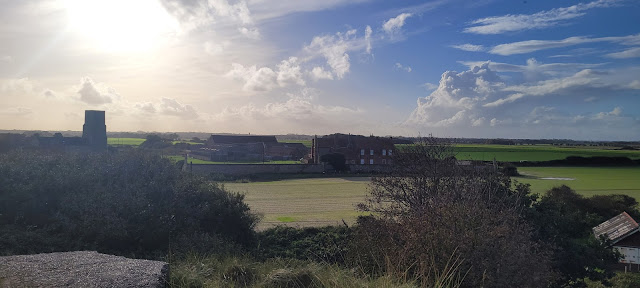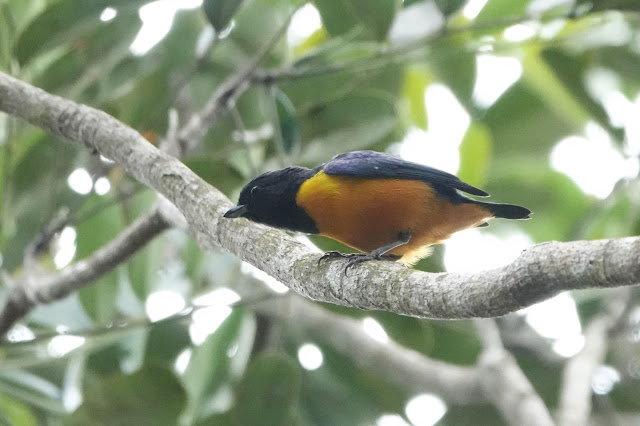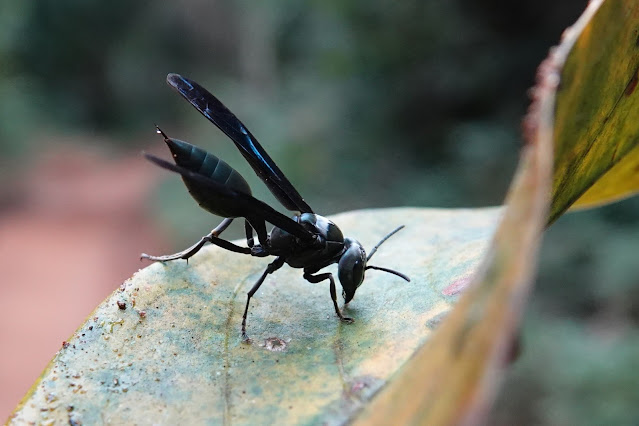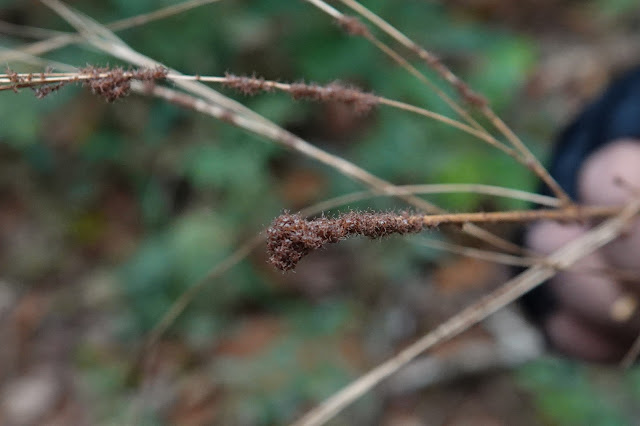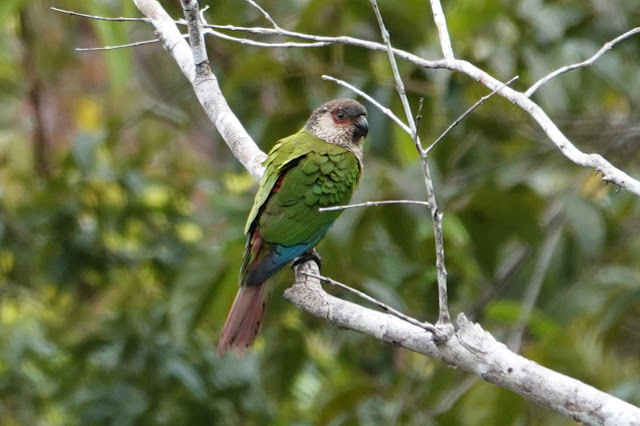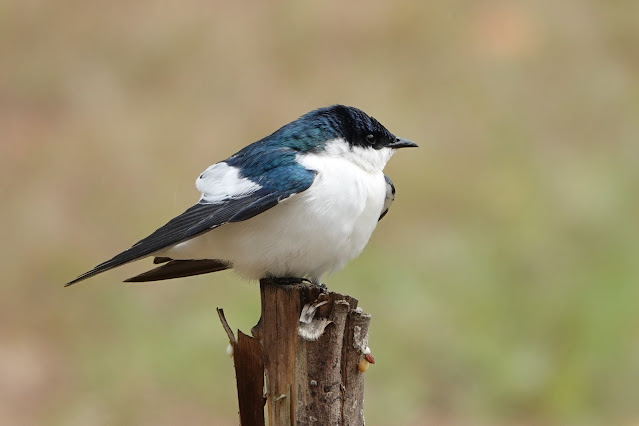I was out checking the moth trap on the early morning of the 24th and birds were obviously still on the move and I very quickly racked up 27 Redwing along with the first three Fieldfare and a Ring Ouzel for the house list! A Grey Wagtail and a few Mipits moved over too and a small party of Wigeon whistled as they headed towards Oulton.
I had seven moths of six species in the trap with a smart Clancy’s
Rustic, Angle Shades, a tiny Silver-Y and a dark Gem along with the almost
expected Light Brown Apple Moth and Large Yellow Underwing.
 |
| Angle Shades |
 |
| Silver-Y |
 |
| Clancy’s Rustic |
 |
| Gem |
A short walk at Pakefield Beach produced 12 Long-tailed Tits, a single female Blackcap and a late Swallow around the Oddfellows along with two hunting Kestrels.
My run of new garden birds while at the moth trap continued
the next morning with Finches replacing the Thrushes. A few Chaffinch and Goldfinch were moving and
four single Redpolls were ticking all the boxes for Mealies being chunky and
heavy fronted, pale underneath and all importantly sounding deeper and more
throaty. If I was on Shetland I would
not have even questioned my logic.
Interestingly other local birders suspected that some of their fly over
Redpolls were Mealy. A gypping
Crossbill soon joined the list too.
Rusty Dot Pearl and a fine Mallow were the meagre Mothage
highlights
 |
| Mallow |
 |
| Mallow |
I headed out the front to clear the car out as I had some
taxi duties that required my car not looking like a skip or smelling like a
sweaty sock. Birds were still moving over and a couple of Rooks cawed and an
opportune moment with the vac turned off brought the sound of ‘nudge nudge wink
wink’ to my ears. Pinkfeet!
 |
| Pinkfeet |
One of the things I had always been jealous of with my
friends around the East Anglian coast was the chance that Pinkies would fly
over your house in the autumn. It is by
far one of my favourite autumnal sounds and here I was with vac in hand
watching a skein of 42 head vaguely southish over my own Lowestoft home. I was very happy.
Some jobs around Wrentham saw me misidentify four Egrets in
a distant cows field at Wenhaston as Cattle Egrets. I worked out how to get closer eventually and
found that they were all Littles and not the expected Cattles.
 |
| Green Brindled Crescent in Wrentham |
Frustratingly the bridge being up in town late afternoon caused such a traffic snarl up that, combined with local temp traffic lights resulted in my having a paddy and fighting my way back home and not persevering for the Siberian Stonechat up at Corton! Silly boy.
Naturally the next morning it was miserable but I still gave
a Corton a go before the weather turned again.
It is an amazing spot and I will visit again. Brent Geese were moving offshore and hundreds
of Cormorants were streaming towards the sea from inland and I can only presume
that they roost at Fritton Lake?
 |
| Wiffling Cormorants |
The trees held Goldcrests and several Coal Tits but I am not
sure if the latter are a regular bird there and Fieldfares chacked from the Poplars. Siskins pulsed through in small regular
flocks before the blackening cloud had be retreating to the car.
The morning of the 27th was different again with
thick fog ebbing and flowing in the town but I still headed down to Pakefield
Beach for a look and I was glad that I did with my first Fieldfares for there
as four came out of the Elms along with a three Goldcrest and a few Siskins but
the star was a Hawfinch calling stridently in the murk as it moved south.
Some mid-morning shopping took us to the Gunton Tesco which
allowed time to drop down Flycatcher Alley into the shelter belt by the Denes Oval
where the Dusky Warbler had been residing for a few days.
It was a little noisy down there with visiting birders doing
more chatting than looking so I moved away and soon heard the soft squelchy tack
as it called from the where the bushes met the Alexanders. One of the Robins pushed it out and chased it
but I was happy with that as I just
wanted to hear it call. It is high on my
Pakefield Beach desired list – I have even chosen the spot!
A couple of Bramblings flew to the Sycamores and a Black
Redstart flashed into the canopy too having appeared to have literally dropped
out of the sky. Suddenly a Yellow-browed
Warbler started up in the same trees and although we were not close we could
all hear it stridently calling in the canopy – once again hearing it was more
than enough for me and anyway, there was frozen veg waiting in the car!
The weekend was spent entertaining both sets of families here
for the first time as well as installing electricity to the garage down the
garden, leaving today free to escape out for a few hours into some glorious late
autumn weather. I did add Chestnut to the garden moth list despite the rain!
 |
| Chestnut |
A female Velvet Scoter on Mutford Lock near the Wherry pub
in Oulton required a one minute walk before getting some excellent views but I
was at bins only at that stage and so have utilised some of Antony’s wonderful
shots.
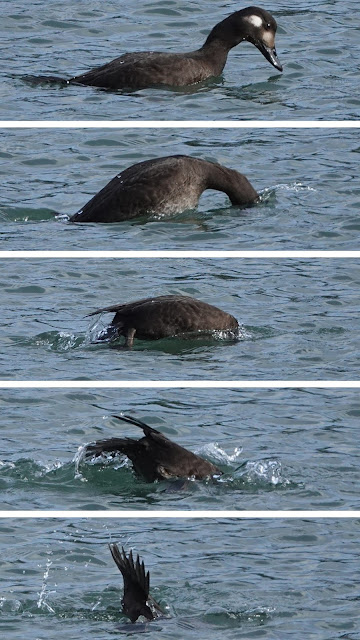 |
| Velvet Scoter - Antony Wren |
 |
| Velvet Scoter - Antony Wren |
On up the coast for an anniversary lunch at The Waterside in Rollesby
before a circuit of the Hickling area. I stopped at Waxham Barns for a walk up
to the dunes and trees. It was so calm, still and mild and I could hear Cranes
bugling inland behind Brograve but despite getting some elevation they remained
out of sight but the sound alone is now so evocative of the Broads.
Eighty Pinkfeet were in the closest wheat field and all around me Black-headed and Med Gulls were out catching winged insects (not ants). The air was full of dancing flies, gnat and midges and there were still many Common Darters on the wing.
 |
| Med Gull - there were at least 40 |
 |
| Flies and gossamer |
 |
| Rabbits - I saw Brown Hares and Muntjac too |
 |
| Ectoedemia heringella |
 |
| Common Darter |
 |
| Common Darter |
I could not find the Hoopoe but there were
Robins galore and a few winter Thrushes in the now largely bare trees. I watched a flock of Long-tailed Tits forage
around me and hoped for stripes but had to be content with fluffy Goldcrests.
With the clocks having gone back it meant a shorter day
already so with the weather remaining fine I headed to St Benet’s Abbey to look
for Owls. I thought that there would be
no one there and was not prepared for the randomly parked cars and lines of
photographers at every gate and fence gap.
I am by no means anti photographer but I did not see a pair of bins
amongst the thirty of so present. I
parked up and immediately saw a Short-eared Owl but all I heard was grumbles of
‘too far’ and not a camera was raised. I
know that it all about personal choice but I struggle to understand it.
 |
| Short-eared Owl |
 |
| Short-eared Owl |
Two more guys were following another Owl across a field beyond
the Abbey so I decided to just go to the ruins and scan from there. I had a very pleasant half hour with four
Shorties and a very pale Barn Owl hunting at various ranges in glorious
light. I could see the cameras and not
one was ever raised.
 |
| Wren |




